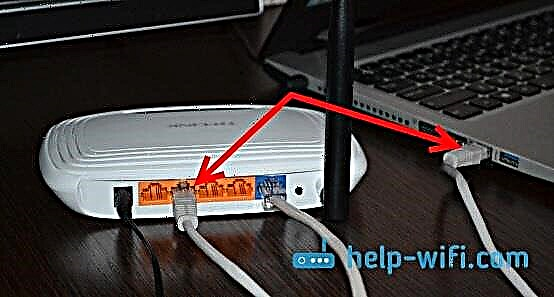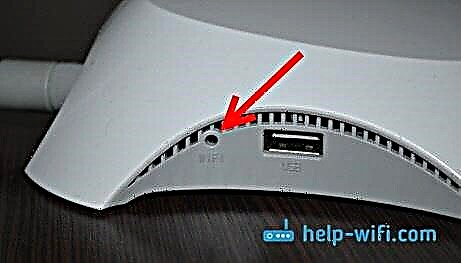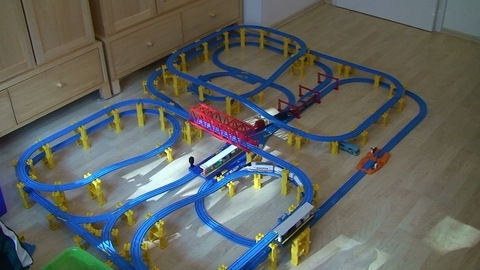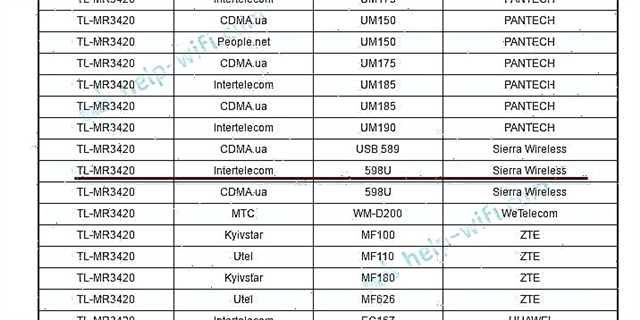In this article, I plan to introduce you to Wi-Fi Mesh systems. I'll tell you what kind of devices they are, how they work, what their advantages are and how they differ from conventional Wi-Fi routers. Let's take a look at the Mesh systems already on the market. The technology is definitely very interesting and the future belongs to it. I think that such mesh Wi-Fi systems will very soon replace conventional routers, since there simply will be no point in buying them.
I was somehow not particularly interested in Mesh Wi-Fi technology and these devices until recently. The first time I got to know these systems was from Tenda, when they asked me to test their Nova Mesh system. Of course, I agreed and was very pleasantly surprised by these devices (I had a set of three modules) and the technology itself in general. I remember how I connected everything and set it up in just a minute. And the coverage radius of the Wi-Fi network (the possibility of expanding through additional modules), connection speed, ease of control, appearance and other little things left only positive emotions. I was delighted with this system. I realized that it is much cooler, simpler and in some cases even more profitable than conventional routers. You can read my review of Tenda Nova MW6 Mesh System for Seamless Wi-Fi Network. After a while, I sent the Nova MW6 system back to Tenda. Unfortunately, other manufacturers of networking equipment did not offer me their Wi-Fi Mesh systems for review.
I watched the news on social networks and came across two posts from different manufacturers at once. TP-Link introduced their TP-Link Mesh Deco system and ASUS had some kind of record about their ASUS Lyra system. I immediately decided that I needed to prepare an article on this topic. Perhaps it will help you with the choice between a Wi-Fi router and a Mesh system. Yes, so far these systems are not very popular, and they are expensive, but this is undoubtedly the future. I think, over time, all wireless network devices will be made with the ability to combine them into a mesh Wi-Fi network.
What is Wi-Fi Mesh and how does it work?
The word Mesh has many meanings. One of them is a network cell. I think it's already roughly clear what a Mesh system is if we're talking about Wi-Fi networks. Mesh networks are a tricky thing (if you consider their basis), judging by the information from Wikipedia. Mesh protocols (IEEE 802.11s, IEEE 802.11k / v / r) and other unnecessary information. But in the end, in the form of ready-made Mesh systems, these are very simple and straightforward devices. Here, of course, manufacturers have tried.
To make it easier for you and me, I will try to explain in simple words. Mesh systems are made up of modules. Each module (separate device) is roughly like a regular router. Typically, these systems are sold in different packages. You can buy a set of one, two, or three modules.
All modules in Mesh systems are the same and equal to each other. There is no main device to which additional modules are connected (like a router and repeaters, for example). And the main feature is that these modules (within one system) can very quickly connect to each other via a wireless network and distribute Wi-Fi to large areas. We can supply one module, and its operation, in principle, will be no different from the operation of a conventional Wi-Fi router. But if we need it, we buy another exactly the same module, plug it into an outlet, and in just 30 seconds they are connected to each other and start working in pairs. In the photo below you can see how the Mesh system of 3 modules works (for example, ASUS Lyra).
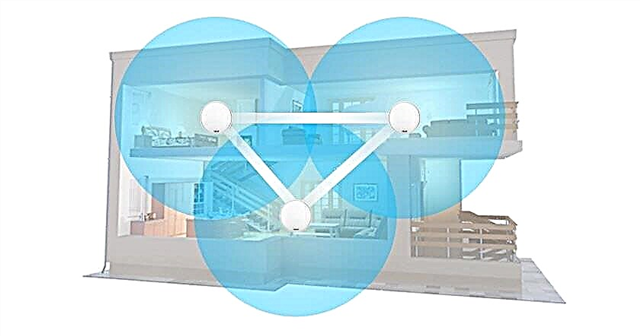
We connect the Internet via cable to one module (to anyone in this network) and this module shares the Internet with other modules of the Mesh system, which are interconnected. As a rule, each such module has several LAN ports, so that devices can be connected to them via a network cable. For example, TVs, game consoles, PCs, etc. Having installed one module, it is enough to connect only the Internet and power to it. We connect only power supply to other modules (if you need them).
All these modules (cells) create a single, high-speed, seamless Wi-Fi network for the whole house, yard, apartment, office or other premises. Due to the modular system, the radius of the Wi-Fi network coverage is very large. No blind spots. You can add as many modules as you need.
Main features of Mesh systems
I want to separately highlight the main features and advantages of these devices and Wi-Fi Mesh technology.
- Long range of Wi-Fi network. It is due to the modular system. For example, we installed one module of some kind of Wi-Fi Mesh system, and it turned out that you don't have Wi-Fi in the back rooms, on other floors, in the yard, in the garage, or somewhere else. We just buy one more, or several modules and turn them on in the area of stable signal reception from the first module. They connect and extend the Wi-Fi network. Their work differs from a pair of Wi-Fi router + signal amplifier (repeater). Below I will tell you exactly how and what are the advantages of a mesh Wi-Fi network in this regard. Photo from the TP-Link website, from the page describing their Mesh Deco system:
 Adding modules - expanding the Wi-Fi network. And most importantly, without losing speed, performance, failures, etc. These devices are designed for this, therefore, everything works very stable. Moreover, if one of the modules "takes off" from the network, then the system automatically restores the connection by connecting through other modules.
Adding modules - expanding the Wi-Fi network. And most importantly, without losing speed, performance, failures, etc. These devices are designed for this, therefore, everything works very stable. Moreover, if one of the modules "takes off" from the network, then the system automatically restores the connection by connecting through other modules. - Seamless Wi-Fi. Wi-Fi Mesh systems create a truly seamless Wi-Fi network. The network is really one within the range of all installed modules. When you move around the house or apartment, the device connects to the module with the best signal. And most importantly, at the moment of switching to another module, the connection to the Internet does not disappear. Even if you communicate through some messenger, there will be no breaks. The download of files will not be interrupted. An example of a seamless Wi-Fi network distributed by Tenda Nova MW6 (in comparison with a conventional router and repeaters):
 It is very cool. There is one network everywhere, as if it were distributed by one device. Without any breaks, shutdowns, switching, etc.
It is very cool. There is one network everywhere, as if it were distributed by one device. Without any breaks, shutdowns, switching, etc. - High speed Wi-Fi network and stable connection. All new Wi-Fi Mesh systems are dual or triple band. AC compliant. They distribute Wi-Fi networks at 2.4 GHz and 5 GHz. ASUS Lyra, TP-Link Deco M9 Plus and possibly other systems use one of the two bands at 5 GHz for communication between network modules. The other two networks (in different bands) are available for connecting devices. An eternal problem when installing Wi-Fi amplifiers is a drop in speed. Even though the modules of Mesh systems are connected by air, the speed practically does not drop. The main thing is that all modules are in a stable reception area with each other.
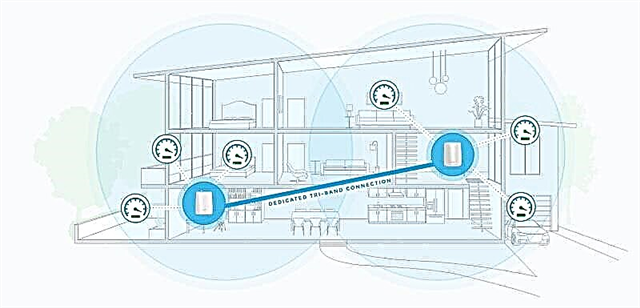 There is support for MU-MIMO and other technologies that are designed to improve and speed up the Wi-Fi network.
There is support for MU-MIMO and other technologies that are designed to improve and speed up the Wi-Fi network. - Very simple setup and connection of additional modules. Everything can be configured via the app from a mobile device. Each manufacturer has a branded application.
- Unusual appearance. Mesh modules are not like regular routers. All systems that are currently on the market are made in an interesting design.
The principle of operation of all Wi-Fi Mesh systems is almost the same. But depending on the manufacturer and model, the characteristics and capabilities of course may differ. There is also a difference in settings and functions. But such systems have everything an average user needs: parental control, connected device management, guest network, port forwarding, antivirus and network protection, firmware updates, etc.
Why is a Wi-Fi Mesh system better than a router + repeater combination?
When the router is not enough (in terms of Wi-Fi network coverage), the most optimal solution is to install a repeater. You can use another router that can work in the mode of strengthening the Wi-Fi network, or additional access points that connect to the main router via a cable, which is not always convenient. A regular repeater also clones the settings of the main Wi-Fi network, and we seem to have one wireless network, but in the router + repeater bundle there are two big drawbacks compared to modular Wi-Fi networks.
- The repeater cuts the speed to about half. And if two or more repeaters are installed? Mesh modules are connected to each other without losing speed.
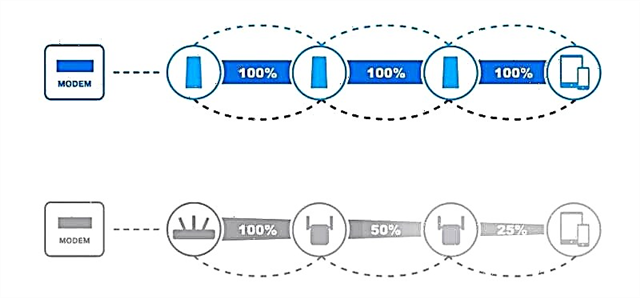 Well, if you used a Wi-Fi network with repeaters, then you probably know how unstable this network is. Repeaters may disconnect, lose connection to the main network, or create problems connecting devices.
Well, if you used a Wi-Fi network with repeaters, then you probably know how unstable this network is. Repeaters may disconnect, lose connection to the main network, or create problems connecting devices. - Repeaters do not create a seamless Wi-Fi network. A true seamless Wi-Fi network can only be built using a Wi-Fi Mesh system. Yes, after installing a regular repeater, one Wi-Fi network is displayed on the devices. But at the moment when the device switches between a router and a repeater, the connection is terminated and the Internet connection is lost for a while. Switching between Mesh modules of the system occurs without breaking the connection.
Even if at the moment there is no need to expand the Wi-Fi network, you can just buy one module of a Mesh system instead of a router. It will work like a normal router. But when one module is not enough (for example, when moving to another apartment), you can buy another module and very quickly expand the Wi-Fi network. And this network will work much faster and more stable, and it will be much more pleasant to use it compared to a network that is built on the basis of a router and a repeater (aka repeater).
I am by no means saying that routers are the last century and they urgently need to be thrown into the trash and buy cellular Wi-Fi systems. It's just that if you are choosing new equipment for creating a large, reliable and fast Wi-Fi network, then why not pay attention to the devices that are ideal for this.
Let's take a closer look at the most popular Mesh systems that are already available for purchase.
TP-Link Mesh Deco
Deco's TP-Link Mesh range is available in three models: Deco M5, Deco P7 and Deco M9 Plus. We seem to have officially presented only the Deco M5. The difference between these models is mainly in the power of the hardware and the speed of the Wi-Fi network. The most powerful and fastest - Deco M9 Plus. This is an AC2200 tri-band mesh system. They have the same appearance. However, Deco P7 has one USB Type-C port, while Deco M9 Plus has one regular USB port.

Since TP-Link has a whole line of Powerline devices, they have used hybrid technology in their Mesh systems (only in the Deco P7 model). When the modules of the mesh system are connected not only via Wi-Fi, but also via wiring. This connection is more stable than Wi-Fi. And in a Wi-Fi + Powerline pair, the connection speed between modules (and therefore on all devices) should increase up to 60%.
Another interesting feature of these systems is IoT Mesh. It allows you to combine smart home devices (sensors and other components) into one system that connect not only via Wi-Fi, but also via Bluetooth and Zigbee. True, this feature is only in the Deco M9 Plus.
There is a Deco app for quick setup and control. TP-Link HomeCare protection system. More than 100 devices can be connected to such a system via Wi-Fi. And also on each module there are 2 LAN ports (one port, on one module it will be used as WAN).
Wi-Fi network coverage (for Deco M5): 2 modules - up to 350 sq.m. 3 modules - 510 sq.m.
Tenda nova
There are 4 models on the official website: MW3, MW5, MW5s, MW6. They all differ slightly in appearance and characteristics. This is how Tenda Nova MW6 looks like (which I already tested):
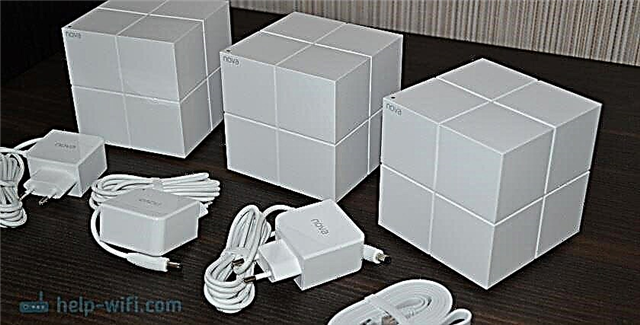
Since I have already done a detailed review of this Mesh system, it makes no sense to write again about its characteristics and capabilities. Can you read what the routers of the future will look like? Review of Tenda Nova MW6 Mesh-system for "seamless" Wi-Fi network.
ASUS Lyra
The youngest is Lyra mini. Dual-band Mesh system, Wi-Fi network speed up to 1300 Mbps. Next comes the Lyra Trio. Also dual-band, with a maximum speed of 1750 Mbps and support for MIMO 3x3 technology. And the most powerful and fastest is Lyra. This is already a tri-band mesh Wi-Fi system with wireless speeds up to 2200 Mbps.

Large Wi-Fi network coverage area, expansion by installing additional modules, seamless network roaming between all modules, optimization of device connectivity, protection of your network with AiProtection, easy configuration and management through the ASUS Lyra app and many other chips. All of these systems are practically the same, even if we consider devices from different manufacturers.
It is possible to connect the nodes of the Mesh system by cable. If, for example, a network cable is already installed in your house. Such a connection will be more stable and reliable, and the Wi-Fi network will be completely free to connect your devices.
You can purchase the required number of nodes of the ASUS Lyra system (1, 2, or 3 modules).
Zyxel Multy X
Powerful, tri-band mesh system from Zyxel. It comes in a beautiful white case.
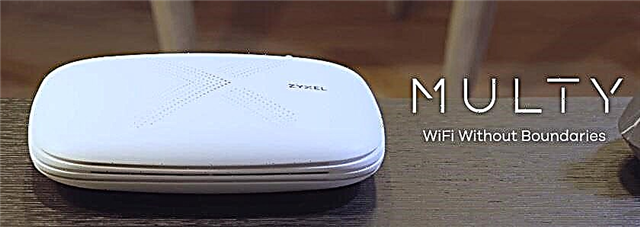
With the help of Zyxel Multy, you can organize a fast Wi-Fi network both in a small apartment and in a large country house. This system is sold in two trim levels. With one or two modules. If we buy one module, then it will work for us like a regular router. If necessary, you can buy another module at any time. If you have a large apartment, or a house where one router could not cope, then I recommend immediately buying a set of two modules.
Since this is a tri-band system, one network in the 5 GHz band is used exclusively for interconnection between network modules. A second 5 GHz network and a 2.4 GHz network are available for connecting devices.
In addition to 3x LAN and 1 WAN port, Multy X has 1 USB 2.0 standard port.
There is a function that selects the best option for connecting modules to each other. And of course, the user can install a mobile application to control the Mesh system from Zyxel.
Netgear orbi
The Orbi range is available in three variations:
- RBK30 (AC2200) - the set includes one router and a device for expanding the network (plugs directly into the socket). But this is still the same Mesh system, not a regular router and repeater. Tri-band technology. One network is dedicated for the connection between the router and the amplifier. Wi-Fi coverage up to 200 sq. meters.
- RBK40 (AC2200) - Wi-Fi coverage up to 250 square meters. This system consists of two identical modules. The system is also tri-band. One module is dedicated for interconnection between network cells.
- RBK50 (AC3000) is Netgear's fastest Wi-Fi system. Differs in higher performance and speed of Wi-Fi network. Wi-Fi coverage up to 350 square meters.
This is what Netgear Wi-Fi systems look like:
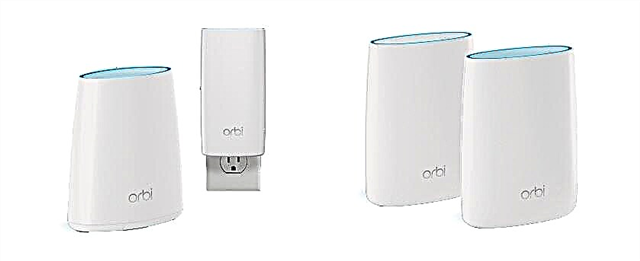
There is an application for managing the system from a mobile device and a set of necessary functions. Parental Controls, Guest Wi-Fi, etc.
Conclusions
The main advantages compared to routers: large Wi-Fi coverage and seamless wireless network (seamless roaming). It is very easy to expand a Wi-Fi network by installing additional modules. Simple setup. Well, and an interesting appearance.
Cons compared to routers: price. Such systems are not cheap. But they are just starting to appear on our market, so the price will fall.
So far, I've only had to configure Tenda's Nova Mesh system. And at the beginning of the article, I already wrote that I was pleasantly surprised by the simplicity and capabilities of these devices. I think this is just perfect for large apartments and country houses. Especially high-rise buildings. Three modules from any mesh Wi-Fi system will easily provide you with stable coverage not only in the house, but also in the yard and other buildings on your site. And if three modules are not enough, you can simply buy and install one more module, or several.
We will follow the development of these devices. In the near future I will try to review other Wi-Fi systems that I wrote about above. Leave comments, write your opinion about the Wi-Fi Mesh technology and about the systems that you may have already been able to test in work.

 Adding modules - expanding the Wi-Fi network. And most importantly, without losing speed, performance, failures, etc. These devices are designed for this, therefore, everything works very stable. Moreover, if one of the modules "takes off" from the network, then the system automatically restores the connection by connecting through other modules.
Adding modules - expanding the Wi-Fi network. And most importantly, without losing speed, performance, failures, etc. These devices are designed for this, therefore, everything works very stable. Moreover, if one of the modules "takes off" from the network, then the system automatically restores the connection by connecting through other modules. It is very cool. There is one network everywhere, as if it were distributed by one device. Without any breaks, shutdowns, switching, etc.
It is very cool. There is one network everywhere, as if it were distributed by one device. Without any breaks, shutdowns, switching, etc. There is support for MU-MIMO and other technologies that are designed to improve and speed up the Wi-Fi network.
There is support for MU-MIMO and other technologies that are designed to improve and speed up the Wi-Fi network. Well, if you used a Wi-Fi network with repeaters, then you probably know how unstable this network is. Repeaters may disconnect, lose connection to the main network, or create problems connecting devices.
Well, if you used a Wi-Fi network with repeaters, then you probably know how unstable this network is. Repeaters may disconnect, lose connection to the main network, or create problems connecting devices.
